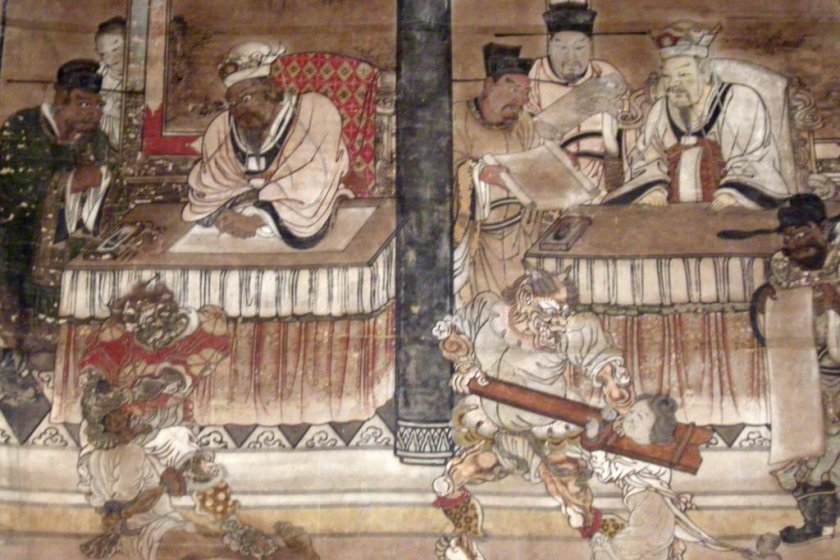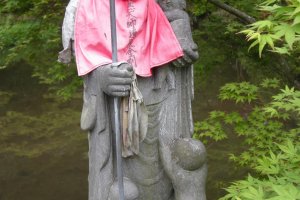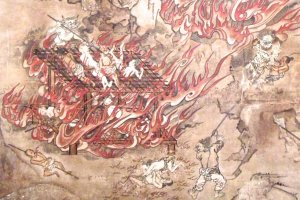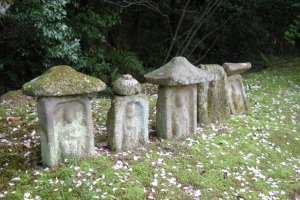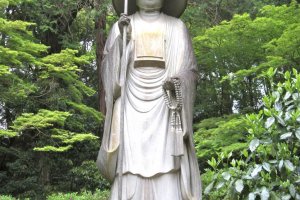Located on the Yamanobe Path at the foot of Mt. Ryūō-zan in Yanagimoto-cho of Tenri City is the Chōgaku-ji Temple. This temple is reported to have been built in the year 824 by Kōbō Daishi under orders of Emperor Junna [r. 823-833] as the counterpart Temple of the nearby Ōyamato Shrine. It is affiliated with the Shingon branch of Buddhism, which is headquartered in Mt. Kōya of Wakayama Prefecture. The temple is number 19 of the important flower temples in the Kansai Region, and the number 4 spiritual site of the 13 Buddhist Sacred Sites of Yamato.
The temple complex consists of four buildings that are designated as Important Cultural Assets (重要文化財) and there are also some notable works of Japanese Buddhist art, including five statues which are likewise designated as Important Cultural Assets. These include a Heian period [794-1185] image of Amida Buddha, one of the oldest examples of glass eyes in Buddhist statues of Japan. Two protector bodhisattva statues flanking the main image also contain glass eyes.
Also worthy of mention is the impressive collection of Hell Scrolls (jigokuzoji 大地獄絵図) that the temple possesses, which date back over 400 years, to the Momoyama Period [1568-1603]. These scrolls are put on display once a year from October 23rd to November 30th in the main Hondō (see pictures) and are well worth seeing.
In the center of the temple complex is an iris pond which contains koi (carp) fish. On the far side of the pond is a three-meter statue of Kōbō Daishi, the founding father. There is also a bell tower whose bell visitors are allowed to freely ring. The pond is also surrounded by statues of Jizō bodhisattva, protector of children, and other stone Buddhist statues which date from the Kamakura period [1185-1382] to the Edo period [1615-1868].
Three different legends about this temple written in English can be found in the books “Ancient Tales of Tenri,” (Part 1 and 2) which are available for free from the Education Department of Tenri City Hall. One tale describes how in the aftermath of a battle on Mt. Ryūō behind the Temple, the battle spread to the temple itself, where many soldiers were killed. Their bloody footprints can be seen on the veranda ceiling outside the main hall and their ghosts are said to haunt the temple.
One could easily spend a couple hours at this temple viewing the important cultural assets and enjoying the scenery around the pond especially when the azaleas are in bloom in late April and May. There is a tourist trail center just outside the temple’s main gate, servicing the Yamanobe Path which offers a place to rest and vending machines which sell drinks.
